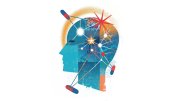Endurance exercise has been shown to have numerous healthful effects, including benefits for brain health. Epidemiological studies have found, for example, that people who exercise are at greatly reduced risk of developing Alzheimer’s disease and dementia. Lab work in mice has shown that they also grow more new neurons that are involved in learning and memory, and the mechanism behind these remarkable effects has been the focus of research spanning nearly a decade. Now, a study published in Nature Metabolism provides powerful evidence that a single hormone produced during endurance exercise is the key link to these improvements in cognitive health.
Assistant professor of medicine Christiane Wrann, senior author of the paper and leader of Massachusetts General Hospital’s (MGH) Program in Neuroprotection in Exercise, says that irisin—named for the Greek messenger god Iris—works in multiple ways to protect brain health and prevent Alzheimer’s and dementia in mammalian models. In mice, the molecule improves cognitive function, dampens neuroinflammation, ensures the healthy development of new neurons, and has beneficial effects on the brain even after Alzheimer’s disease has begun to develop.
The research also showed that irisin can cross the blood-brain barrier, making it a prime candidate for development of a drug to treat Alzheimer’s and other forms of neurodegeneration associated with aging. Mouse and human irisin is identical, and blood levels of the hormone rise in both in response to endurance exercise.
Wrann was a post-doctoral fellow in the lab of her co-author, Korsmeyer professor of cell biology and medicine Bruce Spiegelman, when he first discovered irisin and its parent protein, FNDC5, in 2012. The following year, she and colleagues showed that FNDC5 stimulates a growth factor that promotes the survival of new neurons in culture. But FNDC5 was not considered a good candidate for development as a therapy because it is a large protein, too big to cross the blood-brain barrier. Irisin, on the other hand, which can be cleaved from FNDC5, is a small, soluble molecule, and if developed into a drug, Wrann says, might be more effective at preventing neurodegeneration than exercise itself, if administered more frequently or at higher doses than would typically occur during exercise.
To probe the effects of irisin, the researchers first created mice that can’t produce the hormone. For those mice, they found, exercise no longer made a difference in cognitive performance. And as they aged, the irisin-free mice also developed greater cognitive deficits than a control group. When the researchers introduced irisin directly to the brains of young, wildtype and irisin-free mice, tests of cognitive performance showed improvement in both groups.
The mice without irisin also showed abnormal development of new cells in the hippocampus, a brain structure involved in the formation of memories and the first to show the effects of Alzheimer’s disease: new neurons formed, but with unusual structures and activation patterns, suggesting poor synaptic connections to nearby cells.
The researchers also tested irisin in mice with Alzheimer’s disease. When they delivered a gene that produces irisin into the livers of these mice, permanently elevating blood levels of the hormone, they found the animals showed improved cognitive performance two months later—despite the presence of disease. The altered mice also had reduced levels of neuroinflammation. Wrann says that result is particularly encouraging: the fact that “irisin does not target the amyloid plaques characteristic of Alzheimer’s, but rather neuroinflammation directly,” suggests that its benefits are likely to extend to other neurodegenerative diseases. “We are very optimistic,” she adds, “that these findings will translate into humans.”
“There is an urgent need to develop therapies to preserve cognitive function in aging,” she continues, “whether in Alzheimer’s or other neurodegenerative diseases. And I think exercise is an exciting new paradigm to attack this really important problem.”
Study co-author Rudolph Tanzi, Kennedy professor of neurology and cofounder of the McCance Center for Brain Health at MGH, adds, “It’s hard to imagine anything better for brain health than daily exercise, and our findings shed new light on the mechanism involved: protecting against neuroinflammation, perhaps the biggest killer of brain neurons as we age.”








